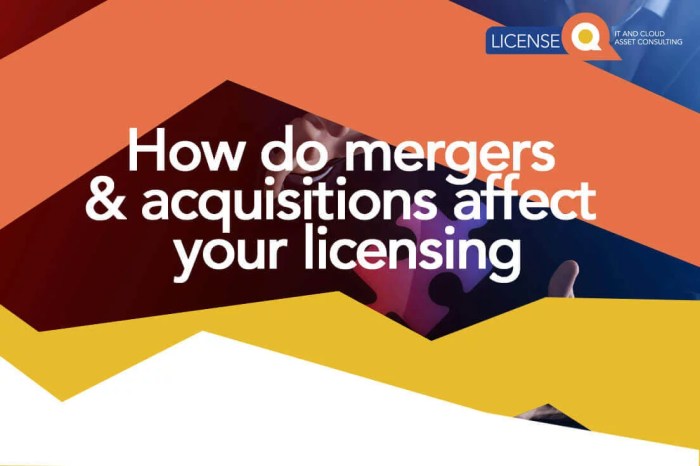Mergers and acquisitions (M&A) are complex processes requiring meticulous planning, efficient execution, and robust data management. The sheer volume of information involved – from due diligence documents and financial data to communication logs and legal agreements – can easily overwhelm even the most experienced teams. This is where M&A CRM software steps in, providing a centralized platform to streamline the entire M&A lifecycle, from initial target identification to post-merger integration.

Source: nmsconsulting.com
Understanding the Role of CRM in M&A
Traditional Customer Relationship Management (CRM) systems focus on managing customer interactions. However, M&A CRM software adapts this core functionality to manage the relationships and data associated with M&A deals. This includes tracking potential targets, managing communication with various stakeholders (investment bankers, lawyers, accountants), and organizing crucial deal-related documents. By centralizing this information, M&A CRM solutions significantly improve efficiency, transparency, and ultimately, the success rate of transactions.
Key Features of Effective M&A CRM Software
- Deal Pipeline Management: Visualize the progress of each deal through various stages, from initial screening to closing and beyond. This provides a clear overview of the M&A pipeline and allows for better resource allocation.
- Contact Management: Maintain detailed records of all individuals involved in a transaction, including their roles, contact information, and communication history. This ensures seamless collaboration and avoids information silos.
- Document Management: Securely store and organize all deal-related documents, including NDAs, financial statements, legal agreements, and due diligence reports. This eliminates the risk of losing critical information and simplifies the audit process.
- Financial Modeling & Analysis: Integrate with financial modeling tools to perform valuations, sensitivity analysis, and scenario planning. This allows for data-driven decision-making throughout the M&A process.
- Reporting & Analytics: Generate comprehensive reports on deal performance, key metrics, and overall M&A activity. This provides valuable insights for strategic decision-making and performance improvement.
- Integration Capabilities: Seamlessly integrate with other business systems, such as ERP and accounting software, to ensure data consistency and streamline workflows.
- Security & Compliance: Ensure the security and confidentiality of sensitive deal-related information through robust access controls and compliance with relevant regulations.
- Collaboration Tools: Facilitate communication and collaboration among team members and external stakeholders through features like shared workspaces, task management, and communication logs.
Benefits of Implementing M&A CRM Software
Implementing a dedicated M&A CRM system offers numerous advantages, leading to improved deal outcomes and operational efficiency:
- Increased Deal Flow: Streamlined processes and improved efficiency allow teams to manage a larger volume of deals simultaneously.
- Faster Deal Closure: Centralized information and efficient workflows accelerate the deal process, reducing the time-to-close.
- Reduced Costs: Automation and improved efficiency minimize manual tasks and associated costs.
- Improved Deal Success Rate: Data-driven decision-making and better communication contribute to a higher probability of successful M&A transactions.
- Enhanced Collaboration: Centralized platform fosters better communication and collaboration among internal and external stakeholders.
- Better Risk Management: Comprehensive tracking and reporting enable proactive identification and mitigation of potential risks.
- Improved Compliance: Secure storage and access control ensure compliance with relevant regulations.
Choosing the Right M&A CRM Software
Selecting the appropriate M&A CRM solution requires careful consideration of various factors:
- Scalability: Ensure the software can accommodate the company’s current and future needs in terms of deal volume and complexity.
- Customization: Evaluate the software’s ability to be tailored to specific business requirements and workflows.
- Integration Capabilities: Verify compatibility with existing business systems to avoid data silos and ensure seamless data flow.
- User-Friendliness: Choose a system with an intuitive interface that is easy to learn and use by all team members.
- Vendor Support: Assess the vendor’s reputation, customer support, and ongoing maintenance services.
- Cost: Consider the total cost of ownership, including licensing fees, implementation costs, and ongoing maintenance.
Frequently Asked Questions (FAQ)
- Q: What is the difference between a general CRM and an M&A CRM?
A: While both manage relationships and data, M&A CRMs are specifically designed for the complexities of mergers and acquisitions, offering features like deal pipeline management, financial modeling tools, and secure document storage, tailored to the unique needs of M&A transactions. - Q: How much does M&A CRM software cost?
A: The cost varies depending on the vendor, features, and number of users. Pricing models can include subscription fees, per-user licenses, or a combination of both. It’s essential to request quotes from multiple vendors to compare pricing and features. - Q: Can M&A CRM software integrate with other systems?
A: Yes, many M&A CRM solutions offer integration capabilities with other business systems, such as ERP, accounting software, and financial modeling tools. This ensures data consistency and streamlines workflows. - Q: Is M&A CRM software secure?
A: Reputable M&A CRM vendors prioritize data security and compliance. They employ robust access controls, encryption, and other security measures to protect sensitive deal-related information. - Q: What are the key metrics to track in M&A CRM?
A: Key metrics include deal volume, deal closure rate, time-to-close, deal size, and return on investment (ROI). Tracking these metrics provides valuable insights into M&A performance and identifies areas for improvement.
Conclusion
M&A CRM software is no longer a luxury but a necessity for organizations actively involved in mergers and acquisitions. By streamlining processes, improving collaboration, and providing data-driven insights, M&A CRM solutions significantly enhance the efficiency and success rate of transactions. Choosing the right software requires careful consideration of your specific needs and a thorough evaluation of available options.
Investing in a robust M&A CRM is an investment in the future success of your M&A activities.
References: M&a Crm Software
- Investopedia – Mergers and Acquisitions
- Gartner – CRM
- (Add more relevant links to reputable sources here)
Call to Action
Ready to transform your M&A process? Contact us today for a free consultation and discover how our M&A CRM solution can help you achieve your deal-making goals.
Popular Questions
What types of businesses benefit most from M&A CRM software?
Businesses frequently involved in mergers and acquisitions, such as private equity firms, investment banks, and large corporations, benefit the most. Smaller companies with active M&A strategies can also see significant advantages.

Source: licenseq.com
How does M&A CRM software improve collaboration?
It provides a central repository for all deal-related information, ensuring everyone involved has access to the same up-to-date data. Features like shared calendars and communication tools facilitate seamless collaboration.
What are the typical costs associated with M&A CRM software?
Costs vary widely depending on the vendor, features included, and the number of users. Expect a range from subscription-based models to more expensive, enterprise-level solutions.
Can M&A CRM software integrate with existing systems?
Many M&A CRM systems offer integration capabilities with other business software, such as financial systems and email platforms, enhancing overall efficiency.
